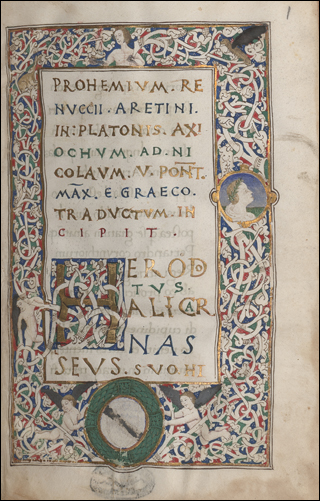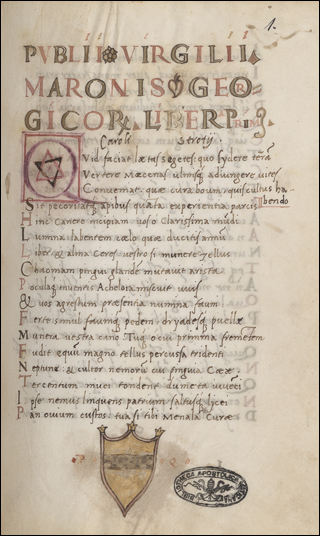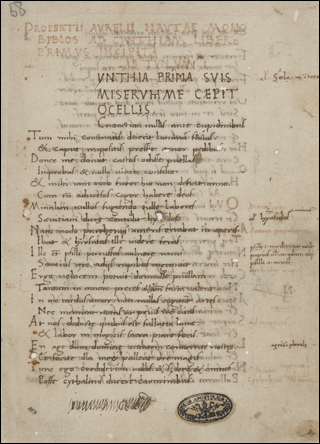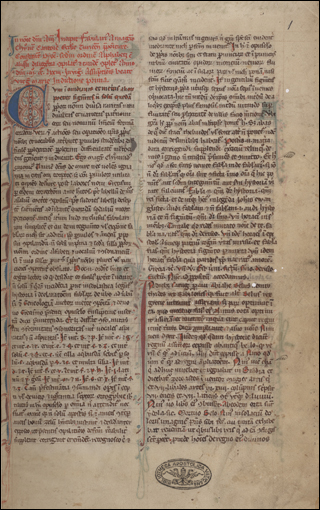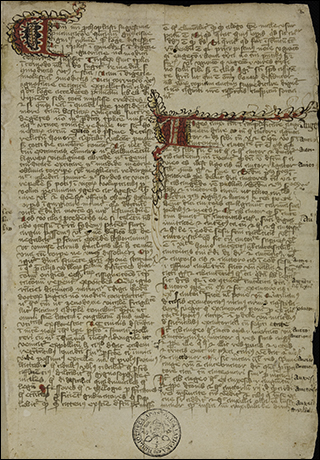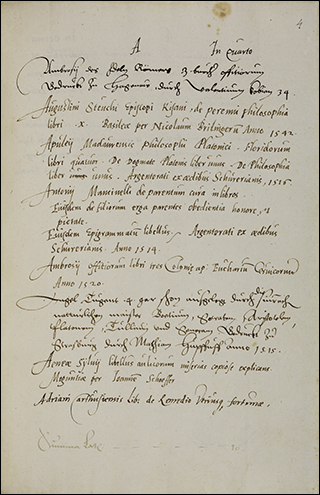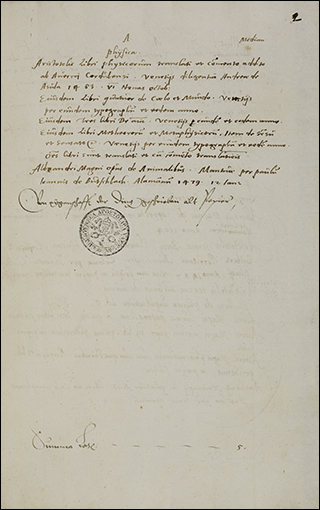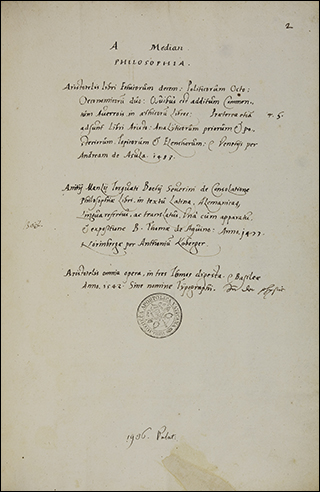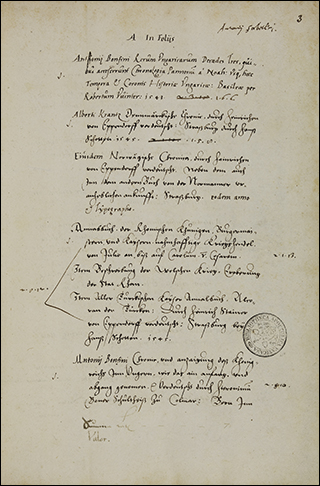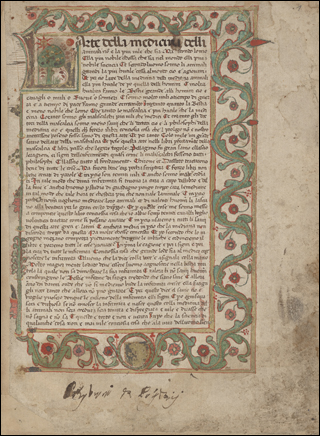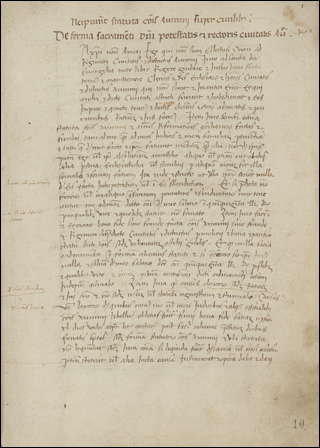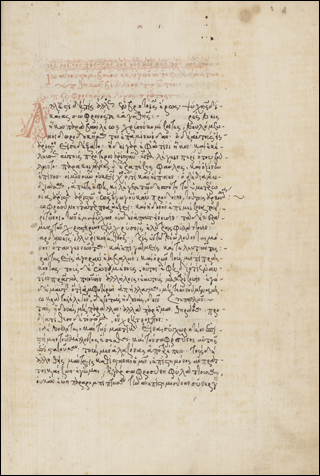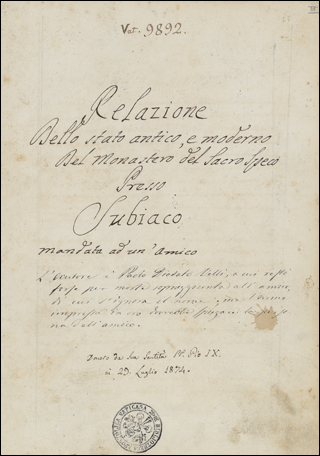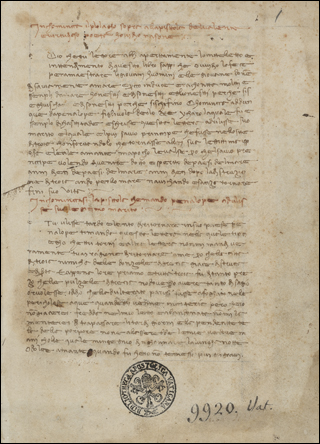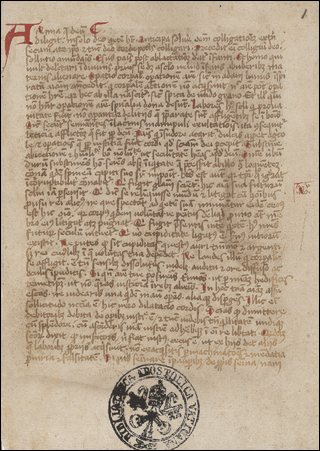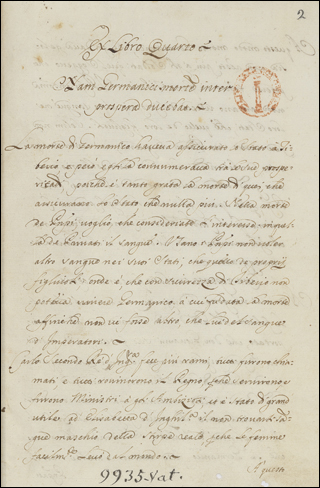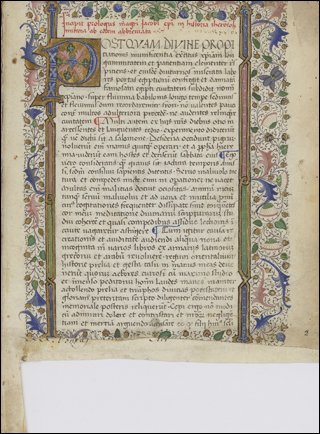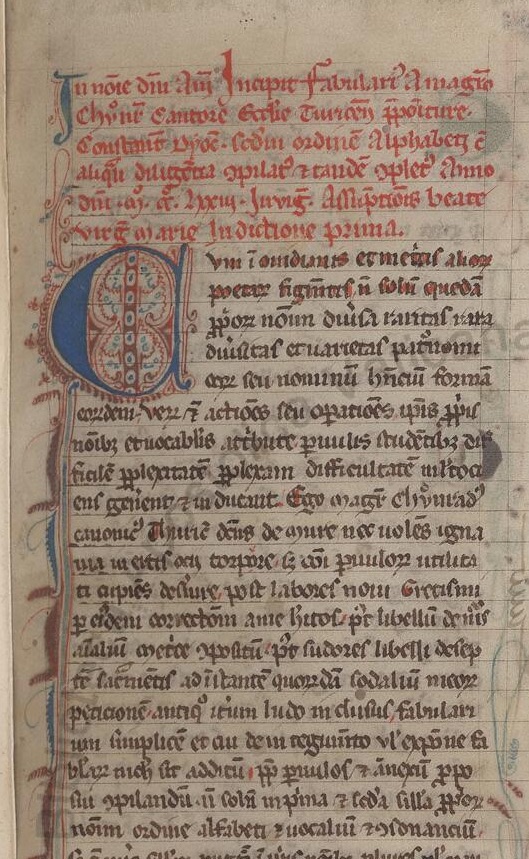This was a quiet week of digitization, with only seventeen manuscripts added to the online repository. Following the most recent trend, these are spread across Barb.lat, Pal.lat, Ross and Vat.lat.9xxx. Interestingly the bulk of the Pal.lat volumes are from the very end of the collection, they are the catalogues of the collection from when it was still in Heidelberg. As we are at approximately the 90% complete mark for that fond, one hopes the next few weeks bring it to completion.
To the right is f.1r from Barb.lat.71, a copy of Conradus de Mure's Fabularius seu Repertorium vocabulorum. The Fabularius is an encyclopedic work, including a history of the human race, a poetic work on the genealogy of the Greek gods, a lexicon of mythological topics, and more. It provides an interesting challenge for the high-speed cataloger as the rubric, as the red introductory text at the top of the image has a very clear dating clause: "Anno Domini M.CC.LXXIII, In vigilia Assumptionis beate virginis marie, Indictione prima". That would be, in English "The day before the feast of the Assumption, AD 1273, first Indiction". The day is August 14, as the Feast of the Assumption of the BVM is August 15, and the year is 1273. The clause "first indiction" is an additional notation of the year, in this case agreeing with the roman numeral year of 1273. The indiction was a 15 year cycle, beginning with year 312 as the first Indiction 1, which originated with the tax calculations done in Roman Egypt. It is often included as part of the dating clause of legal documents.
However, despite all of this accurate dating information, that is the date of the composition of the text, not the writing of the copy which we see. This is an undated copy, but due to the paleography, is probably from the 14th Century.
The bottom border is from f.1r of Ross.802, an early 15th C Italian translation of a Latin work on equine medicine, De medicina equorum.

